Siheung-dong Course Review
- home
- Culture & Tourism
- Tour of Geumcheon
- Siheung-dong Course Review
Siheung-dong Course Review
When you feel like taking a stroll, surrounded by fresh air and exotic alleys,
and learn about the history through your steps.<History and Culture Trail of Siheung-dong> will satisfy all your cravings.
for about an hour, we recommend you to install a map application onto your mobile phone. It will prevent you from
making any fruitless trips and even make you feel like you are going on an adventure following a treasure map.
Now, once you're done with installing the map application, let us begin our adventure in search of treasures.
This journey begins at <Siheung Hanggung Site at ginkgo tree intersection> located at 836-33 Siheung-5-dong.
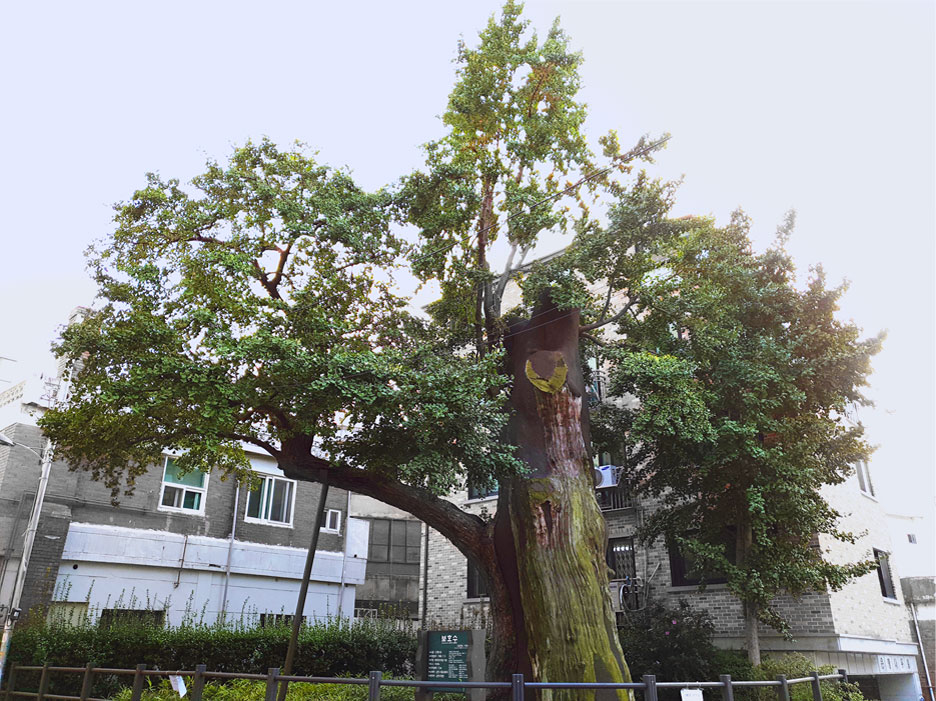
Siheung Hanggung
Site at ginkgo tree
intersection
<Haenggung: a temporary palace
where the king and royal family
retreated to during a processions
outside the royal palace>
his filial piety.
Realized that the tomb where his father, Crown Prince Sado, had been buried was not in a good location under the prin
ciples of feng shui, King Jeongjo moved the tomb to Hwasan
in Suwon, which was considered one of the most auspicious
locations during the Joseon Dynasty, and named it
Hyeollyungwon (顯隆園).
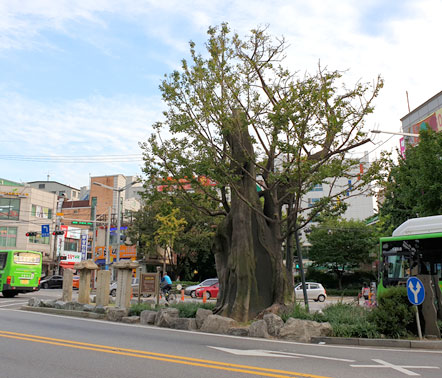
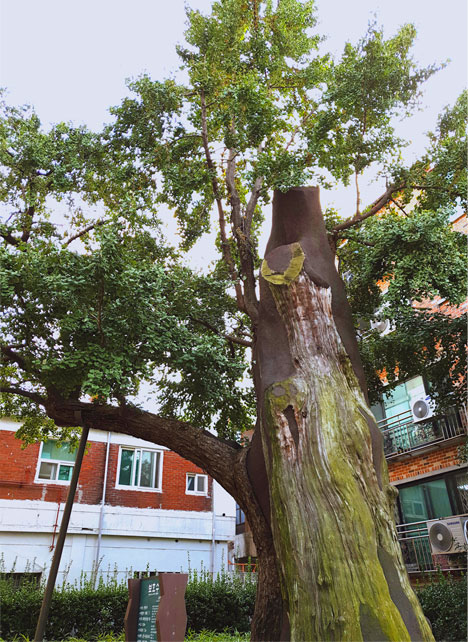
‘Siheung Hanggung’ was a temporary palace built by King Jeongjo to stay overnight on his way from Hanyang to Suwon.
Although Haenggung is no longer standing, three ginkgo trees, which are more than 800 years old, guarding the site silently implies
its long history. Standing in front of a ginkgo tree, which illustrates 800 years of long history that humans cannot fathom, I ponder
upon the mind of King Jeongjo who would have missed his father while staying at this palace.
Now, let us head towards our next destination, <Anyangcheon Site> located at 169-53 Siheung-4-dong, carrying the energy of the
ginkgo tree.
Anyangcheon Site
called Gyeongmyeong, the first Joseon restaurant to
specialize in royal cuisine.
The restaurant's owner, ‘Ann Siheung,' opened the restaurant
in 1930 under Japanese colonial rule with his own personal
asset to promote national spirit and the anti-Japanese struggle.
Memorial services were held before the painting of Dan gun at
‘Anyangcheon’ every spring and fall, but the place was closed
and buried under the ground in 1936 by the Japanese colonial
government's severe oppression. After the Korean War, local
residents tried to restore 'Anyangcheon' but the place became
involved in a land ownership dispute in 1981, and was eventu
ally torn down. Currently, its previous existence can be identi
fied through the markings attached to the row house built over
its site.
hood remain, I pay silent tribute to the spirit of our ancestors who struggled to keep their souls from being taken away by the
Japanese invaders, despite their bodies being remained at hands of the Japanese.
After entering the address ‘807-14 Siheung-dong’ in the map application, it takes about 300 steps to arrive at the <Previous Residence
of Kang Hui-maeng > located across Dongdo Supermarket.
scholar who dominated the field of Korean literature from the era of King Sejong until King Seongjong.
He was an excellent writer and experienced politician who was likened to renowned Chinese writers,
Sima Qian, Han Yu, Liu Zongyuan, and Ouyang Xiu
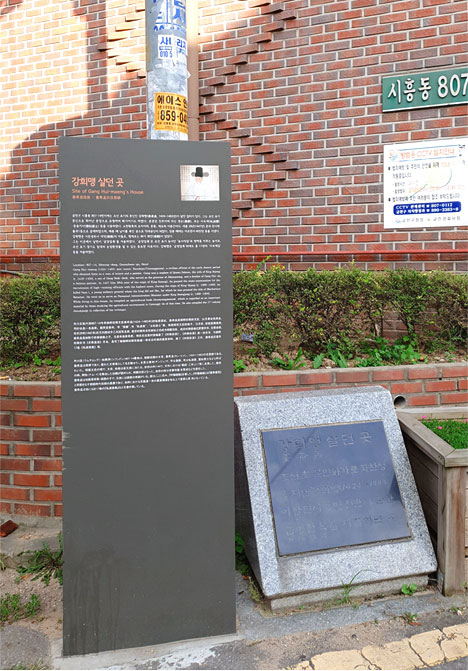
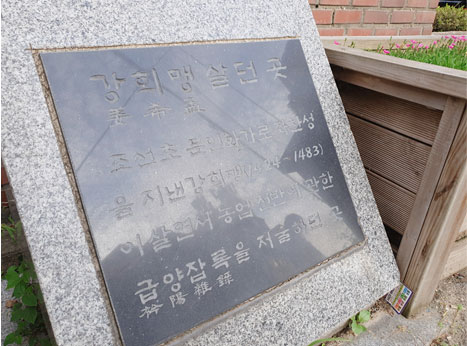
He was appointed three times as a meritorious subject,
given to those who make a contribution to the state and the
crown, and was promoted to the position of Jong-1-pum
(vice rank No. 1), ‘Jwacheongseong,’ after serving in various
government posts under the favor and trust of a number of
kings.
Kang Hui-maeng also authored the book "Geumyang
Jamnok," which is known as an important source of informa
tion on the agricultural environment in Gyeonggi Province
during the early Joseon period.
Nearby from this location, there stands the <Graveyard for the Descendants of Lord Yangdo, the An Clan of Sunheung>, which has been
designated as one of Seoul City’s Tangible Cultural Heritages.
the An Clan of Sunheung
This site accommodates tombs of three generations of Angyeonggong, a founding contributor of the
Joseon Dynasty, and his sons and grandsons.
The fact that, King Taejo, Yi Seong-gye, was to be buried at this site, but Angyeonggong's tomb was
placed here as he died before King Taejo, shows how auspicious this location is under the principle of
feng shui. Perhaps that is why the energy and scenery of this graveyard give off a deep and solid vibe.
Also, the tombs and stone structures at the graveyard are in good condition, serving as valuable
resources for those who study the transformation of tomb types and memorial services held before
the grave in the early Joseon Dynasty.
Upon arrival, if you turn your head towards the opposite side, you will see Hoamsan Mountain, which also played a major role in
founding the Joseon Dynasty, marking Siheung-dong's importance in history.Search for the location, ‘230-40 Siheung-dong’ at the graveyard and take about 2,000 steps to encounter <Chinese Juniper & Three-story
Stone Pagodas>.
Chinese Juniper &
Three-story Stone Pagodas
huge juniper that gives off extraordinary energy
at a glance.
The more than 500 year-old juniper appears to embrace its
long history, just like the ginkgo trees in the Haenggung
Site at the Ginkgo Tree Intersection. The juniper served as
an important village guardian where everyone in the village
gathered to hold ancestral rites to pray for peace and well-
being each year. The tree has been designated as a
guardian tree of the city.
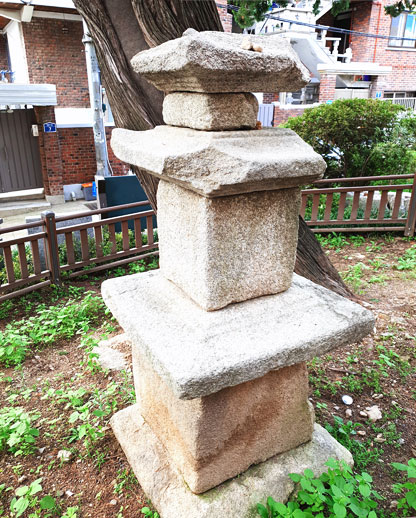
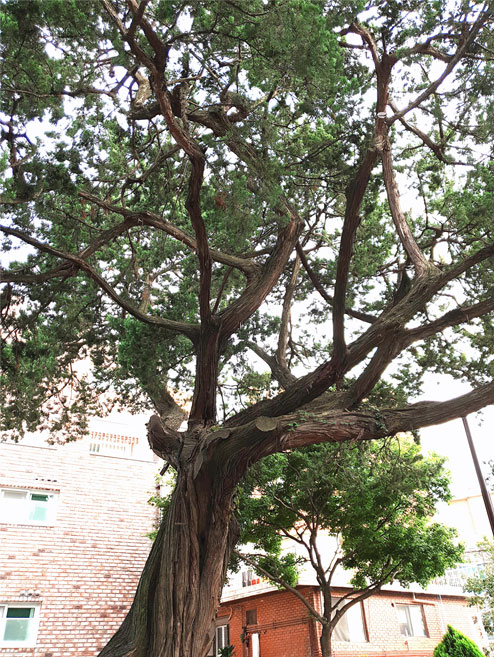
Under the shade of the juniper, there stands a small, tranquil three-story
stone pagoda with no detailed written history, but the pagoda is believed
to be more than 500 years old and an orally passed down story tells that
wives with no children who pray before this pagoda would give birth to
sons.
After taking a short break under the juniper, walk 300 steps down
towards the ‘Last Stop of Beomil Transportation, where you will see
<Siheunghyanggyo Local Confucian School Site>, the final stop in this
course, across the last bus stop.
Confucian School Site
As you may well be aware, Hyanggyo was an educa
tional institution established to deliver Confucian
teachings to local students during the Goryeo and
Joseon Dynasty. The Confucian scholars of the
regions of Gwacheon, Anyang, and Uiwang, including
Siheung, all studied at Siheung Hyanggyo. An interest
ing fact is that the Buddhist monks had a hard time
walking by this Hyanggyo during the times in which
the Confucian scholars abused their authority, as the
school was located on the road to ‘Yeongjuam
Temple’ on nearby Gwanaksan Mountain.
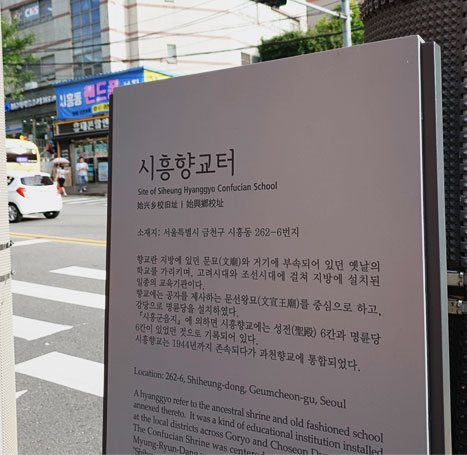
As Japanese colonialists incorporated Siheunghyanggyo Local Confucian School into Gwacheonhyanggyo (Local Confucian School), no
remains exist today, but I picture the sounds of Confucian scholars reading out loud in my mind, which perhaps once resonated this
place.
in every corner of Siheung-dong with a map
and finally arrive at the end of this journey, a
grateful feeling for the history of our ances
tors prevails.
Joseon, to honor their late kings, to develop Joseon,
and to reclaim the nation that had been taken away
from them. This history has allowed us to follow their
traces today.
I hope that these steps will bring us closer to our history and
to the future of this land that our forefathers dreamed of.
